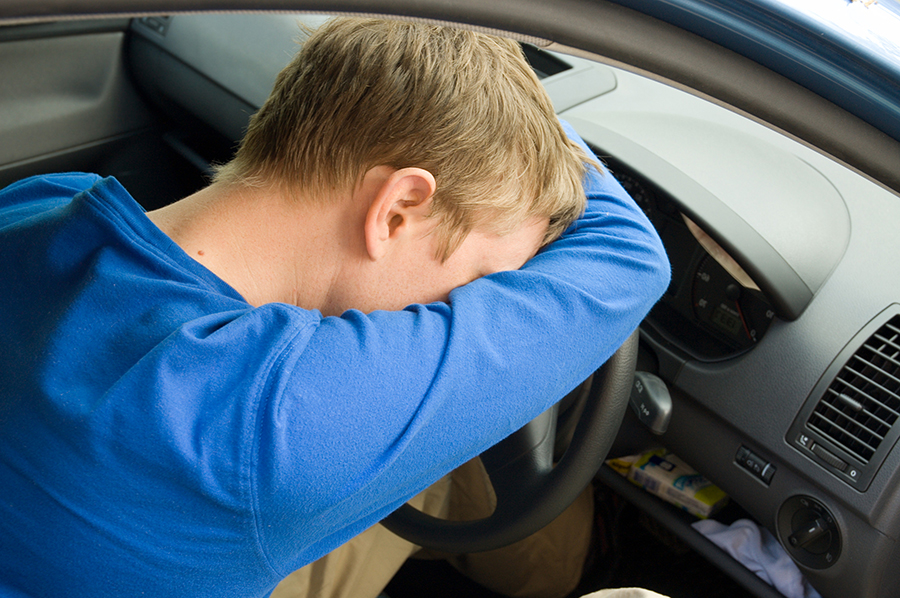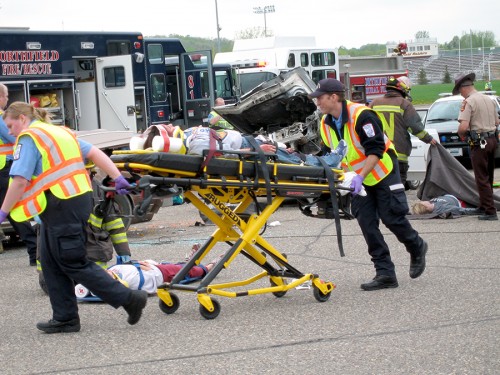Myths and Truths About Children’s Drunk Driving
Let’s be a little daring today and run around with a pin popping people’s bubbles – at least as it regards misconceptions about children and drunk driving.
All the press from organizations like MADD (Mother’s Against Drunk Driving) I’m afraid has left even me with the mental picture of some cretinChildren and drunk driving – no contest who deliberately goes out and gets smashed fully knowing that he’s (it’s always a man, isn’t it) going to go out and plow into some innocent car on his way home from the bar.
That, I’m sure, does occur but isn’t the most common picture. And, from my youth – a much, much more simpler time – the most common mental assumption of a child being killed in a drunk-driver situation would be a bunch of limbic-system activated frat boys driving off a cliff or in front of a train after an all night keger.
That too I know does occur; but, neither, I’m afraid conveys what actually happens on the U.S. roads every day of the year. Let me summarize the findings of a new comprehensive study analyzing 10 years of drunken driver deaths for all U.S. states and the D.C.. [I do have to state that I believe their statistical findings and will present them here, even though I find the over all study woefully deficient when trying to analyze the situation and their conclusions and recommendations a bit bizarre.]
Bubble 1 – Drunk driving is NOT the leading cause of traffic deaths in children
In 2010 1,210 children under 15 years of age were killed in a car crash.
That’s younger than most states legal driving age so the statistic doesn’t include drunken teenagers with drivers licenses. Only about one in five (20%) of such fatal crashes involves drunk driving.
Eighty percent of children’s deaths in automobiles are for causes other than alcohol related.
Bubble 2 – Who is it that is drunk?
 Most children die riding WITH the drunk driverDespite what you may have thought, it is not a family in one car and the drunk driver in the other car.
Most children die riding WITH the drunk driverDespite what you may have thought, it is not a family in one car and the drunk driver in the other car.
The study conducted by the Erie Family Health Center in Chicago reveals that 2,344 US children younger than 15 years old died in 2,075 car crashes involving drunk drivers between 2001 and 2010.
And, of those, 65 percent were actually riding WITH the drunk driver!
Fortunately, the same statistics show that over the same 10-year period, the number of child passengers killed while riding with a drunk driver decreased by 41% — from 197 in 2001 to 116 in 2010.
Those years, of course, have been the years where several intensive “seat-belt” campaigns were instituted and severe legislation enacted.
Bubble 3 – Death, drunkenness and seatbelts
Most distressingly, at least 61% of children who die while riding with a drunk driver were NOT restrained at the time of the crash.
In those crashes which killed a child, 70% of the time the driver survived! That would lead most people to surmise that the crash WAS survivable and that IF the child had been restrained they could have survived too.
Mandatory child restraint laws have been enacted in every state and the DC and most of them allow police to ticket solely for a restraint violation.
Again considering children under 15 killed in fatal crashes, in 2001 34% were unrestrained. By 2010 that percentage had decreased to 20%.
Bubble 4 – Substantial variation by state.
 Children’s drunk driving deaths vary widely by stateThe authors of the study found that the differences in death rates of children due to alcohol vary significantly between states. THEY, mistakenly I believe, amazingly attribute it to the variability in “child endangerment laws.”
Children’s drunk driving deaths vary widely by stateThe authors of the study found that the differences in death rates of children due to alcohol vary significantly between states. THEY, mistakenly I believe, amazingly attribute it to the variability in “child endangerment laws.”
“The top three states,” they state, “SOUTH DAKOTA (16 for 0.98/100,000), NEW MEXICO (36 for 0.86/100,000) and MISSISSIPPI (46 for 0.73/100,000) don’t have endangerment laws.” And the bottom three states, Massachusetts (10 0.08/100,000), New York (28 0.08/100,000) and New Jersey (13 0.07/100,000) all do.
Let me get this straight! Some moronic piece of legislation is going to be a greater deterrent to someone killing one of their own kids (or someone they know) than anything else a state could possibly do?!!
In addition, what they (conveniently for their own thesis/agenda) left out was that they didn’t even count the fourteen lowest states because “their numbers were too low for statistics.” Neither did they state that it was only three of the top ten states who didn’t have legislation nor that two of the BOTTOM 10 (which were counted) didn’t have it either.
Look, some states have these laws and some don’t BUT I can see absolutely NOTHING in these stats which show that having them on the books makes the miniscule of difference in this problem – so, for them to claim that they do is simply unfounded and bizarre.
Bubble 5 – Other surprise, and alarming, findings
There were several other surprising revelations (to me at least) when they got to analyzing the U.S. traffic death data and I’ll bet at least a few startle you too. Here is what we’ve now learned about the death of children from drunk drivers:
Child Deaths From Drunk Drivers
- Drunk driving is significant, but NOT the leading cause of the death of children in auto accidents.
- Sixty-five percent of child deaths in such auto accidents occur because they were RIDING WITH the drunk driver!
- And, sixty-one percent of those deaths occurred when the child was NOT RESTRAINED even though over seventy percent of the drunk drivers survived that same crash.
- The higher the blood alcohol concentration of a driver, the more likely his or her child passenger was unrestrained in the fatal crash.
- There is statistically NO EVIDENCE that “child endangerment” legislation has any effect on a states death rate of children in drunk driving accidents.
- One-third of the alcohol-impaired drivers in this study did not even possess a valid driver’s license at the time of the crash which killed their child passenger.
- In fact, the actual legal data collected by various state’s police force (i.e. the basic blood alcohol levels) vary widely between states – from 13% to 100% of the cases. Fortunately, for legal purposes “drunkenness” can be imputed by drivers actions, symptoms and police findings.
- Women comprised more than one-third of the alcohol-impaired drivers transporting children who died.
- The crashes in which child passengers died while riding with an impaired driver were more likely to involve only 1 vehicle and to occur during evening or nighttime hours compared with crashes in which children died as a passenger of a nondrinking driver.
Wha-da-ya think? Any surprises there?
The Rest of the Story
What this study does is publicize cumulative data to the public which we otherwise wouldn’t have and for that effort the researchers/authors did us a huge favor. It is clear, however, that they still really have no more valid suggestions for how to solve the “problem” than we had before.
It is obvious that there IS A SIGNIFICANT difference between the various states in children’s drunk driving deaths, seat belt use, overall drunk driving rates, male/female drunkenness rates and legal-police efforts.
This study DOES NOT allow further delineation of the issue but increased so-called “endangerment” legislation efforts are like, how do the camping boys say it, “urinating upwind”; and only waste valuable time and effort which could be used to locate-resolve the “real” source of this needless issue.
The author’s seemingly off the top of the head suggestions include: using sobriety checkpoints – inconveniencing millions of drivers; minimum drinking ages – all states already have them; enforcing blood alcohol limits – great if they can do better than driver’s license compliance and zero-tolerance laws – whatever they mean by that, I’m sure we’ve got plenty of spare space in our prisons.
Almost as an after-thought the authors suggest that “installing breathalyzers in car ignition switches may also be an option” – actually the only thing that probably might work.
To me it is obvious that the real solution to this issue will be difficult, expensive and perhaps terribly inconvenient to the vast majority of the population. And, the only real solution will come when the public’s priorities change due to visualizing the problem as a whole – an attempt at which this research project began the process.

